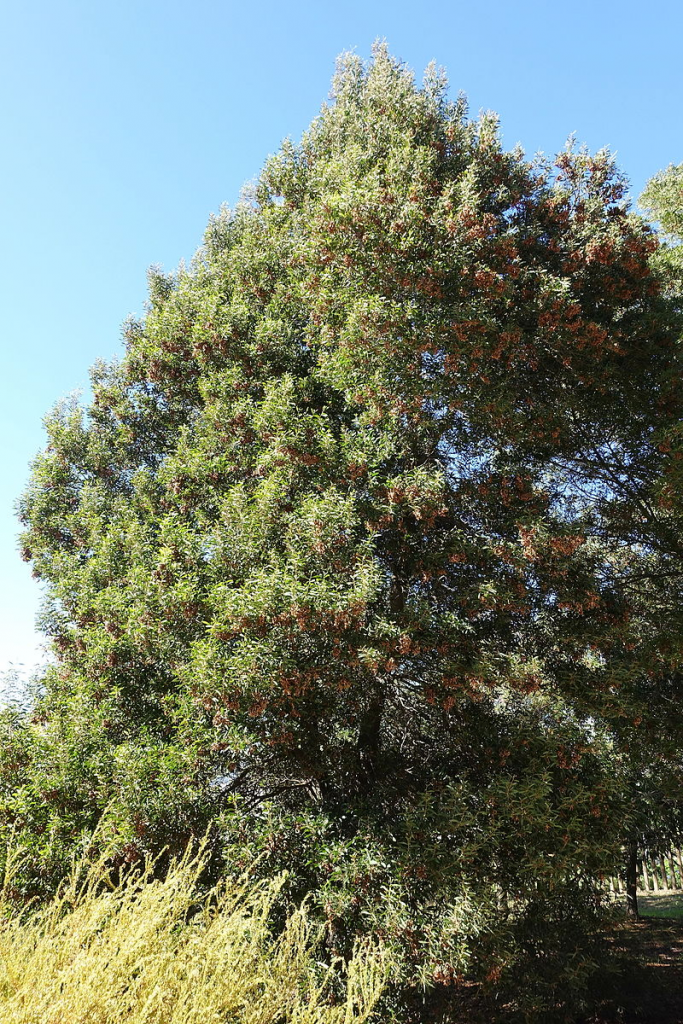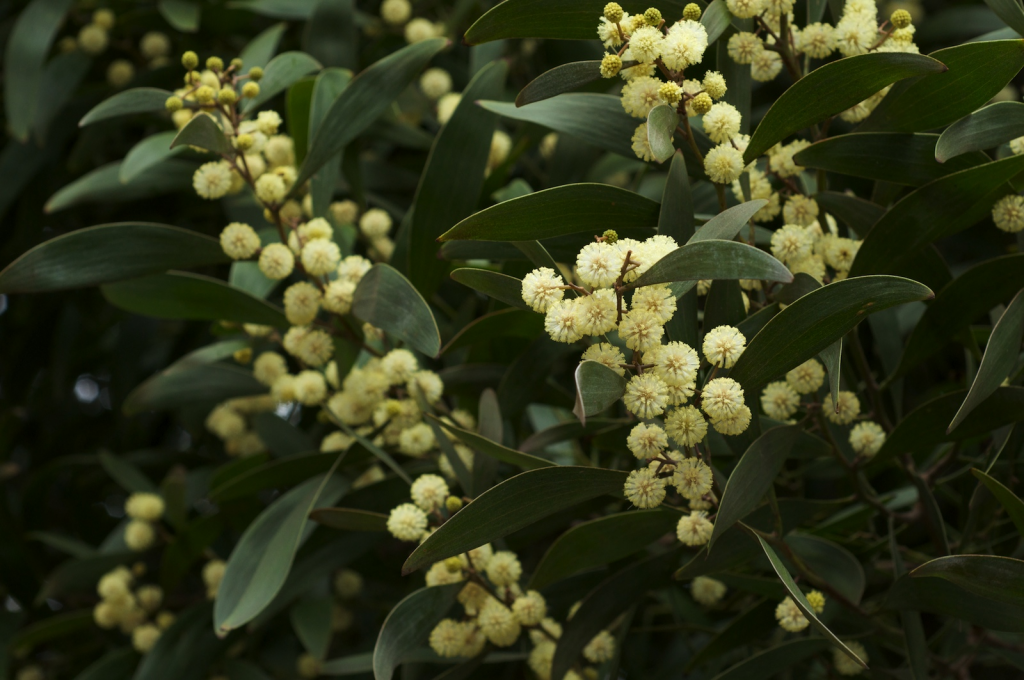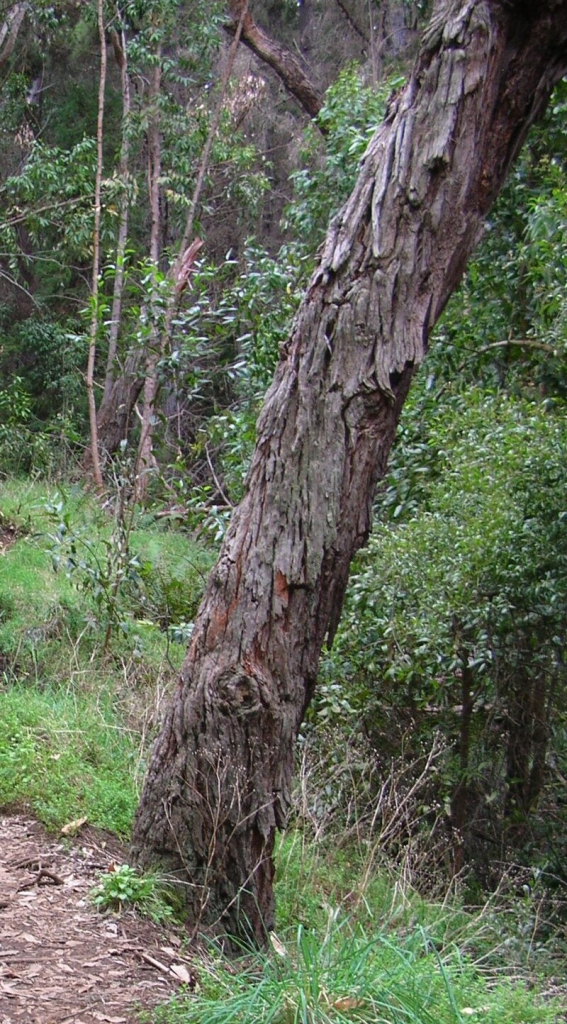
Also known as hickory, mudgerabah, and Tasmanian blackwood, this evergreen tree is native to southeastern Australia including Tasmania, and is a member of the legume family, Fabaceae, that also includes pea, black locust and lupine. The tree grows up to 66′ tall and has angular and ribbed branches and rough dark gray to black bark with vertical fissures when mature. True leaves may persist for many years but usually give way to leaf-like phyllodes that are glossy, leathery, dark green to grayish-green and 2-5″ long. They vary in shape but are usually elliptic to lanceolate, straight to slightly curved, taper near the base, and have pronounced parallel venation. From late winter to spring, small ball-like clusters of flowers appear in the phyllode axils. The clusters are made up of 30-50 small densely packed, creamy-white flowers with numerous protruding stamens. The fruit that follows is a thin curling seed pod. Blackwood is valued for its very rapid growth and is used for erosion control, screening, and as an ornamental. The wood of the tree is considered as desirable as walnut and is used for a variety of items such as musical instruments and fine cabinetry. Care must be taken when planting Australian blackwood, however, because the vigorous root system can damage sidewalks, foundations, and plumbing. In addition the plant can become invasive. The genus name, Acacia, comes either from the Greek word akazo meaning to sharpen or from the Egyptian word akakia, a name given to the Egyptian Thorn, Acacia arabica. The specific epithet, melanoxylon, comes from the Greek words μέλᾱς (mélās) meaning black, and ξύλον (xúlon) meaning wood. Photo Credit: Daderot, Wikipedia

Photo Credit Eric in SF, Wikipedia
Type: Evergreen tree
Outstanding Feature: Rapid growth, wood
Form: Oval to pyramidal
Bloom: Clusters of creamy-white flowers with numerous protruding stamens, from late winter into spring
Growth Rate: Rapid

Photo Credit: Forest and Kim Starr, Wikipedia
Size: 40-66′ H x 20-30′ W
Light: Full sun
Soil: Average, medium moist, well-drained
Hardiness: Zones 8-11
Care: Prune regularly to maintain shape
Pests and Diseases: None of significance
Propagation: Seed, semi-ripe cuttings